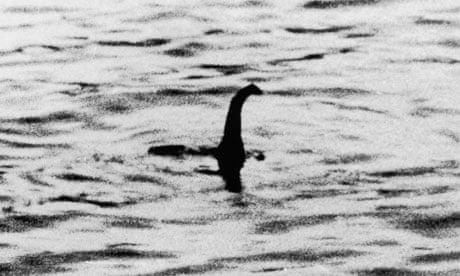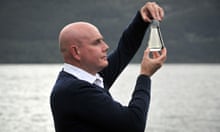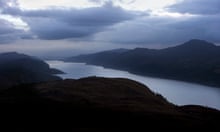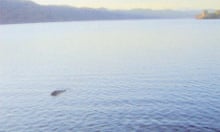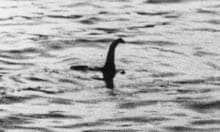Of 80 participants in a weekend symposium at the Edinburgh science festival, 20 signalled their belief in the existence of the Loch Ness monster and 15 declared their disbelief. The rest sat on their hands.
"I believe in a large, unidentified creature in the loch, possibly amphibious – that is, a fish that goes on land," said Roland Watson, author of Waterhorses of Loch Ness, who blogs as "Glasgow Boy".
"I think otters are responsible for some of the sightings, with their tails above the surface," countered Adrian Shine, naturalist on the Loch Ness Project. Having explored the depths in his tiny submarine, he could confidently run through a list of creatures who weren't the monster. A plesiosaur which has survived the Jurassic period? "The water's too cold and they're extinct."
Everyone, though, would have agreed with Gordon Rutter, biology teacher and one of the organisers, when he said: "We are here today to celebrate the 80th anniversary of the first modern sighting."
It was on 14 April 1933 that a local couple caught a glimpse of, well, whatever she is (yes, Nessie may not exist but she's female). The first use of the words "Loch Ness monster" in a newspaper was on 2 May.
Rutter showed the first (purported) photograph, taken on 12 November. "The most common theory is that it looks like a dog which has just picked up a stick."
Some snaps are definitely forgeries, such as the one of a long-necked model made of plastic wood glued to a toy submarine. In another photo, the humps sticking above the surface are in fact bales of hay.
Dick Raynor said the film he took in 1967 as a 17-year-old of a serpentine shape sinking below the surface was mightily persuasive – until years later he saw a diving duck and her chicks achieve precisely the same effect.
"I stopped believing in grown-ups," he said of Nessie researchers. Like many of the non-believers, Raynor is still fascinated by the monster phenomenon: he is now a tour boat skipper on Loch Ness.
Others would like to leave Nessie as a possible, however improbable, reality. "I like not knowing," said Alan McNiven.
The monster resembles an aquatic version of Schrödinger's cat, both existing and not existing. That is just fine by the Scottish tourist industry, according to David Martin-Jones, a film lecturer. Most Nessie films were B movies, he said, but they became adverts for the locality. Certainly Martin-Jones's clip of The Secret of the Loch (1934) demonstrated that the scenery outclassed the dialogue.
Some of the sightings might as well be fiction. "The plural of anecdotes is not data," said Charles Paxton, the other organiser and a research fellow at the St Andrew's school of mathematics and statistics. The phenomenon he studies is the fact that a sighting has been reported, not its accuracy. Using an algorithm to handle 1,132 reports, he analysed how sightings fell into different types.
Perhaps unhelpfully, the largest cluster was made up of reports with negligible details. More positive findings came from his graph incorporating the curve of the discovery of new animals against time. "New freshwater animals are still being discovered," he said.
This was apparently the third symposium devoted entirely to Nessie, and it will not be the last. The beast from the depths has enthralled people since 565AD when St Columba cried out the name of the Lord to save a swimmer about to be devoured by the Loch Ness monster. Probably no one believed him either.
